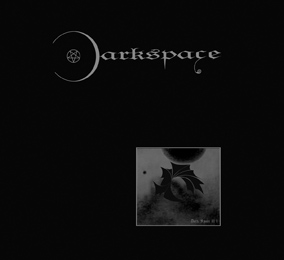
Imagine my cosmic joy and happiness… I thought this Swiss band did not exist anymore, since their last album (Dark Space III) was released in 2008. But no need to mourn, because the trio (still the same line-up as in the early years) returns with their fourth album, called Dark Space III I (which sounds more original, let’s admit, than IV, isn’t it). Mind the space in between the first ‘III’ and final ‘I’, by the way…
I would like to label this band as the Swiss Limbonic Art, yet I recognize the shortcoming of that comparison; but with a certain nuancing in mind, I proudly repeat this statement. Anyway, Dark Space III I consists of three lengthy compositions, that strongly go on in the vein of the older stuff. And once again they are entitled the sub-logical way (I did invent this description myself), i.e. 4.18, 4.19 and 4.20. 4.18, clocking nearly half an hour (both other compositions last for more than eighteen minutes, by the way) shows that this band did not switch to another current. This first stage of the journey starts with a minimal and noisy industrialised introduction, but after about three minutes, we’re deepening to the essence of this astral Cosmic Black Metal. That cosmic side has to do with things like the mechanical drum computer (which does not irritate in this band’s case) and the addition of some robotised and spacy vocals once in a while. The Black Metal side is of the extremely harsh, cacophonous kind, once in a while fabulously hypnotic (cf. towards the end of the opener). Most riffing is fast to blasting, with unlimited variation in speed (indeed, total decelerations are included, which is a good thing), and the screams are oh so grim. These vocals aren’t that prominently mixed, but the background sound of them gives that extra dimension of obscurity. And with that obscurity we also touch the lyrical theme of Darkspace, by focusing on the nothingness of our human kind within the totality of Space and Cosmic Existence. Besides the keyboards are of utter importance. At the one hand there are the intros and intermezzos, and at the other they are a constant during the metalized outbursts. I mentioned Limbonic Art, didn’t I, and that’s exactly what you might expect by this synth-presence. 4.19 (instrumental) evidently is comparable, yet the atomic structure is less apocalyptic and less bleak, cf. the dominant riff that is both massive as it is mind-blowing, for example. 4.20 finally goes on in the vein of the opening hymn, with dissonance and disharmony interfering peacefully with symphonic grotesquery and orchestral majesty. Here too the screams are subject to the general full-force attacks, as a black hole-implosion nearby in the Cosmos.
